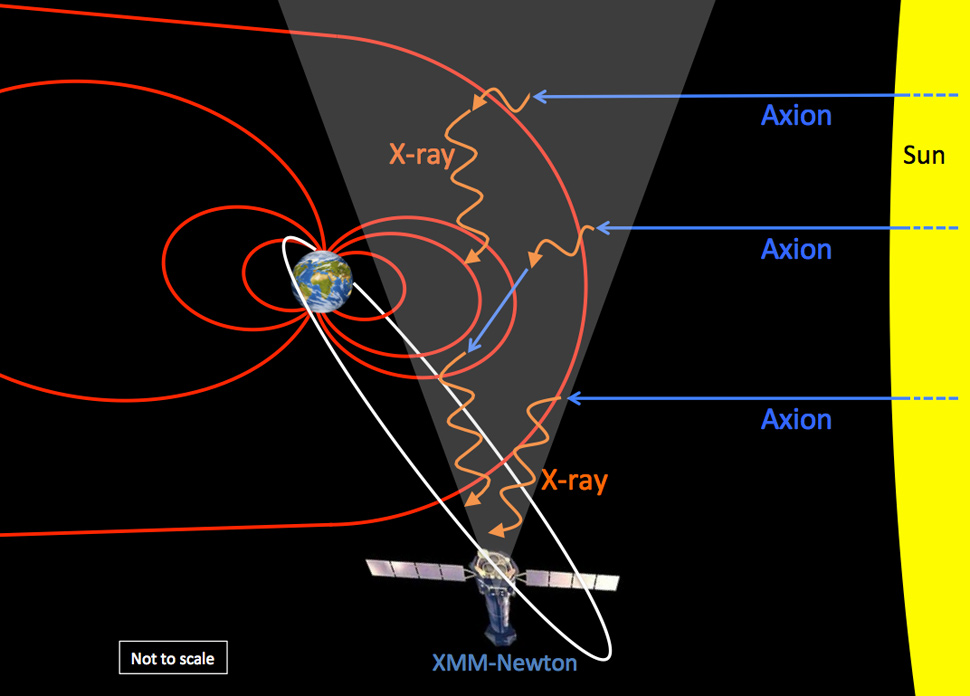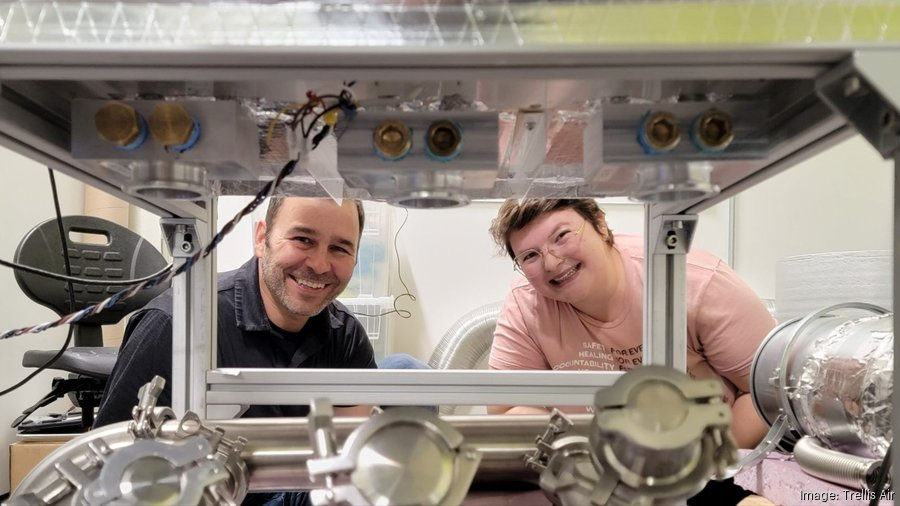Axions are a key concept in modern physics, representing a leading candidate for dark matter, the elusive substance that comprises a significant portion of the universe’s mass. These hypothetical particles have sparked immense interest among scientists for their potential to address fundamental questions in particle physics. Recent groundbreaking experiments have provided new avenues to explore axions, particularly through the use of quasiparticles, offering tantalizing hints at their existence. Researchers have been utilizing advanced materials like manganese bismuth telluride to simulate and detect axions, paving the way for exciting innovations in quantum technologies. As the quest for understanding dark matter progresses, the significance of axions in the fabric of the cosmos continues to grow.
In the realm of theoretical particle physics, axions emerge as crucial entities that could unlock the secrets of dark matter—an unseen substance thought to account for a majority of the universe’s mass. These hypothetical entities not only challenge our understanding of the cosmic landscape but also invite innovative methodologies to unearth their existence through quasiparticle interactions. Recent interdisciplinary research has turned the spotlight on unique materials such as manganese bismuth telluride, which are being crafted to simulate axion behavior experimentally. As scientists push the boundaries of technology and material science, the potential to explore axionic properties for future quantum technologies emerges, heralding a new era in the search for the cosmic constituents that make up our universe.
Understanding Axions and Their Role in Dark Matter
Axions are theoretical particles that have gained significant attention in the field of particle physics as a potential solution to the mystery of dark matter. The predictions surrounding axions stem from the need to explain the unequal distribution of visible matter in the universe, constituting approximately 85 percent of its mass in an unseen form. Their existence not only provides answers to long-standing questions about dark matter but also enriches our understanding of fundamental particles, potentially unifying quantum mechanics and cosmology.
The quest to confirm the existence of axions hinges on their unique properties, which dissociate into quasiparticles within specific materials. This interaction allows researchers to explore their characteristics indirectly, using advanced technologies to track these hypothetical particles in laboratory settings. Such research is crucial for validating theoretical models and expanding scientific knowledge regarding how axions influence cosmic evolution.
Quasiparticles: A Gateway to Detecting Axions
Quasiparticles are emergent phenomena that arise from interactions within materials, behaving like particles even though they are not fundamental constituents of matter. In the recent experiment, researchers employed axion quasiparticles as simulacrums of the elusive axion itself, enhancing the scope of dark matter discovery. By utilizing manganese bismuth telluride, a material with remarkable electronic properties, scientists are able to simulate and detect these quasiparticles, paving the way for breakthroughs in the understanding of dark matter.
The technique involves intricate manipulation of material structures at the atomic level, allowing researchers to study the behaviors of axion quasiparticles under highly controlled conditions. These quasiparticles not only serve as proxies for further investigation into axion particles; they also open new avenues in quantum technologies, suggesting potential applications in areas such as quantum computing and information processing.
The Implications of Axion Research for Future Technologies
The innovative approach taken by researchers signifies a pivotal advancement in the search for dark matter with direct implications for future technologies. The interaction of axion quasiparticles with photons could lead to transformative optical applications, revolutionizing diverse fields such as telecommunications and computing. By exploring axion polaritons, researchers aim to exploit new light-matter interactions, potentially giving rise to devices that surpass current limitations in processing speed and efficiency.
Moreover, the ability to create a reliable dark matter detector through the principles identified in this research could reshape our understanding of the universe. The proposed “cosmic car radio” could capture signals emitted by dark matter, facilitating a deeper comprehension of cosmic structures and the forces governing them. This prospect fosters excitement among scientists as it not only addresses fundamental questions in physics but also augurs technological breakthroughs that may flow from the insights gained through ongoing axion research.
Manganese Bismuth Telluride: The Material Behind the Discovery
Manganese bismuth telluride has emerged as a revolutionary material in the pursuit of understanding axions and other quasiparticles. Known for its unique electronic properties, this compound enables researchers to explore quantum phenomena through precise manipulation and observation. Through intricate layering and nanofabrication techniques, scientists have created optimal conditions for axion quasiparticle interactions, demonstrating the importance of materials science in modern physics.
The challenges presented by manganese bismuth telluride, including its air sensitivity, require innovative approaches to maintain the integrity of the material while studying its properties. This research exemplifies a multidisciplinary effort, bringing together expertise in condensed matter physics, material chemistry, and particle physics. The successful application of this material not only advances the search for dark matter but also illustrates the potential for other materials to yield insights into fundamental questions within quantum technologies.
Interdisciplinary Collaboration: Key to Successful Experiments
The recent success in detecting axion quasiparticles can be attributed to the interdisciplinary collaboration among scientists from various institutions. This approach blends expertise in multiple fields, including condensed matter physics, high-energy physics, and advanced material sciences, creating a robust framework for innovation. By pooling resources and knowledge, researchers have been able to devise sophisticated experiments that push the boundaries of conventional research in particle physics.
Such collaborations not only enhance the experimental capacity but also facilitate more comprehensive research into complex phenomena such as axions and dark matter. The team’s collective efforts underscore the critical role that multidisciplinary approaches play in solving some of science’s most challenging problems, as they continue to strive toward confirming the existence of dark matter through innovative experimental methods.
A New Era in Dark Matter Research
As the race to confirm the existence of axions gains momentum, researchers find themselves at the forefront of a new era in dark matter research. With an expanding body of literature paralleling the wave of discoveries surrounding the Higgs boson, interest in axions has surged dramatically. The burgeoning field has sparked numerous experimental proposals and theoretical discussions, further solidifying axions’ position as a primary focus in contemporary particle physics.
The potential for breakthroughs within the next 15 years promises to illuminate the mysteries surrounding dark matter, contributing not only to scientific knowledge but also inspiring future generations of physicists. Researchers now have the tools and theoretical backing necessary to explore this cryptic dimension of the universe, potentially leading to new discoveries that could reshape our comprehension of fundamental physics.
Future Directions in Axion Research
Looking ahead, the research team is poised to delve even deeper into the properties of axion quasiparticles, honing experimental methods for increased precision and reliability. By refining their techniques, scientists hope to enhance their capacity to probe dark matter, making significant strides in confirming the existence of axions and understanding their role in the universe. The focus will be on establishing a framework for effective axion detection that may ultimately advance the field of particle physics.
The collaborative model that has fueled this research will remain pivotal as scientists investigate the versatile applications of axion quasiparticles. Their findings could eventually lay the groundwork for newfound technologies in information systems and quantum computing, highlighting the symmetry between fundamental research and practical innovations. The future of axion research stands to not only broaden our understanding of dark matter but also revolutionize technology through continued exploration of quantum materials.
The Scientific Community’s Response to Axion Research
The scientific community has responded enthusiastically to the groundbreaking findings in axion research, with numerous physicists echoing the excitement surrounding the prospect of identifying dark matter. High-profile figures in the field, such as Frank Wilczek, have underscored the significance of these developments, emphasizing the potential for revolutionary advancements in particle physics that could emerge from confirming the existence of axions. This growing interest has also invigorated academic discourse, inspiring new hypotheses and research directions.
The interdisciplinary focus of the research symbolizes the vibrant exchange of ideas that characterizes the scientific method. Contributions from varied fields not only facilitate improved methodologies but also cultivate a collaborative spirit that enhances the overall pursuit of knowledge. As researchers worldwide invest in axion detection and study, the community continues to foster an environment conducive to discovery, ensuring that the quest for understanding dark matter remains at the forefront of modern physics.
Significance of Funding in Axion Research
Adequate funding remains integral to advancing axion research, allowing researchers to access cutting-edge materials and experimental tools necessary for their investigations. Support from prominent organizations such as the U.S. Department of Energy and the National Science Foundation enables teams to explore ambitious theoretical ideas, translating them into practical research efforts. This financial backing is crucial for sustaining innovative projects that probe the depths of particle physics and address questions surrounding dark matter.
Moreover, the collaboration of various funding agencies highlights the collective recognition of the importance of dark matter research in understanding the universe. By investing in this area of study, these organizations not only support scientific discovery but also promote developments that could lead to groundbreaking technologies in quantum systems and beyond. The continued commitment to funding axion research will undoubtedly amplify its impact on the scientific community and society as a whole.
Frequently Asked Questions
What are axions and how do they relate to dark matter?
Axions are hypothetical elementary particles proposed as a solution to various problems in particle physics, particularly as a candidate for dark matter. Dark matter accounts for about 85% of the universe’s mass, and confirming axions could help scientists unravel the nature of this mysterious substance.
How do quasiparticles relate to the search for axions?
Quasiparticles, such as axion quasiparticles, act as simulations of axion particles in experiments. Researchers use these quasiparticles to detect actual axions and confirm their presence through interactions with dark matter.
What is manganese bismuth telluride and its significance in axion research?
Manganese bismuth telluride is a material known for its unique electronic and magnetic properties, making it ideal for creating axion quasiparticles. Its 2D crystal structure enhances quantum characteristics essential for axion research.
What role do quantum technologies play in investigating axions?
Quantum technologies are crucial for studying axions as they enable researchers to understand and manipulate quasiparticles. Advances in ultrafast laser optics and precision measurement tools enhance the observation of axion dynamics.
How can axion quasiparticles be used as a dark matter detector?
Axion quasiparticles can function as detectors by capturing the energy from dark matter interactions. When a dark matter axion excites a quasiparticle, this reaction provides evidence for the axion’s existence and helps locate dark matter signals.
What potential applications might arise from research on axion quasiparticles?
Research on axion quasiparticles may lead to novel optical applications through phenomena such as axion polaritons. These findings could significantly influence both quantum technologies and particle physics.
Why is the current period significant for axion research in particle physics?
The current wave of research on axions mirrors the intense scientific interest in the Higgs boson prior to its discovery. Several studies and experiments aim to confirm axions as a viable dark matter candidate, with advancements happening rapidly.
What future developments are expected in axion research?
Future developments in axion research include refining experimental techniques to probe axion dark matter more precisely. This could lead to significant breakthroughs that benefit the broader particle physics community.
| Key Point | Details |
|---|---|
| Existence of Axions | Axions are hypothesized particles suggested to explain dark matter, which constitutes a significant portion of the universe’s mass. |
| Experimental Breakthrough | A team led by Harvard and King’s College London has made progress in detecting axions using axion quasiparticles. |
| Research Methodology | The researchers used manganese bismuth telluride to create a 2D crystal structure that supports the formation of axion quasiparticles. |
| Significance of Findings | Experimental evidence of axion quasiparticles paves the way for advanced dark matter detection methods and quantum technologies. |
| Future Goals | The researchers aim to refine their experimental techniques and improve precision in their axion dark matter explorations. |
Summary
Axions are pivotal in understanding dark matter, which remains one of the most enigmatic components of the universe. The groundbreaking findings from the researchers at Harvard and King’s College London signify a vital leap forward in confirming the existence of these elusive particles. With advanced techniques to detect axion quasiparticles, the path to uncovering dark matter’s secrets looks promising. This research not only strengthens the foundations of particle physics but also opens new frontiers in quantum technologies, making axions a central topic in contemporary scientific exploration.








